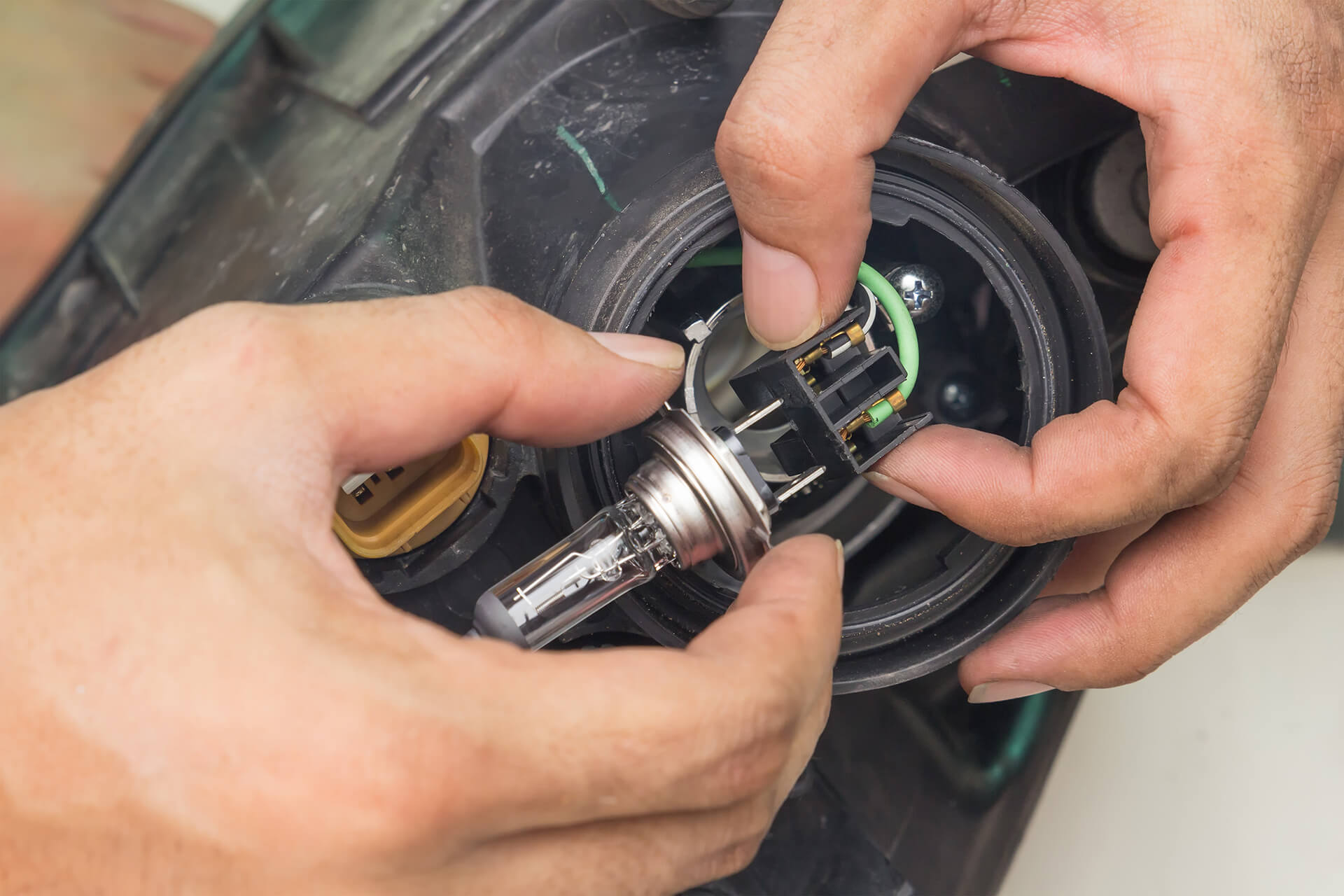Repairing headlights: what you have to keep in mind
You might have noticed while driving home in the evening that you have a defective headlight. The darker it gets, the worse your visibility becomes – which not only can be tiring for you as a driver, but it can also be dangerous for both you and other road users. You cannot always carry out repairing headlight lenses yourself; sometimes the only thing that helps is a trip to the workshop. However, with a little technical skill and some handyman talent, it is possible to do the following repairs yourself:
- Replacing bulbs/light sources
- Repairing loose headlamps
But if you have the following problems, it is better to go to a workshop instead of doing it yourself:
- repairing cracks in headlight or removing scratches from headlight covers
- Defective xenon or LED headlights
- Adjusting headlamp levelling
Replacing light source

If the light on the front or rear of the car is broken, you might be able to repair this yourself. The prerequisite is that conventional bulbs are used in your headlamps and neither xenon light nor LED bulbs are used. The replacement or repair of the latter two light sources should only be carried out by specialist personnel as subsequently the headlamps have to be readjusted, a task requiring special measuring equipment.
How to change the rear light or the low beam is described in your vehicle’s manual. There may be differences from model to model in the replacement of bulbs. On some vehicles you can access the low beam via the inside of the engine compartment, while on others you have to remove the headlamps to change the bulbs.
Repairing loose headlamps

Sometimes it happens that a headlamp no longer has a tight fit. The most common cause is that the ventilation rubbers have been damaged by foreign bodies such as dirt, leaves or small twigs. If water then enters the headlamp, it can no longer drain off. Over time the headlamp becomes fogged up inside. In the worst case, water in the headlamp can also cause a short circuit.
If the ventilation rubbers on the headlamp are damaged, you can very easily seal small cracks yourself with a little silicone. But before you do this, check that the headlamp is absolutely dry inside. It is best to use a hair dryer to ensure the area is completely dry before applying the silicone.
Another possibility for water in the headlamp is cracks or fissures in the plastic cover. These can be caused either by stone chippings or a light source with too high an energy intensity that makes the plastic crack through excessive heat generation. In this case, you should replace the headlamp or rather the plastic cover (or have it replaced) and install a less energy-intensive light source.
Removing scratches from headlight lenses
Repairing cracked headlight plastic by polishing is illegal because as a result headlamps are structurally changed. In order to fix cracked scratched headlamps, the covers need to be exchanged and replaced with new ones.
Repairing xenon or LED headlamps
Repairing LED headlamps is really not possible since the complete headlamp must always be replaced as individual components in it cannot be repaired separately.

Xenon lamps cannot be replaced without a great deal of work and effort either, which is why you should go to a workshop for such repairs. To replace xenon lamps, the complete headlamp has to be removed and often the battery also has to be disconnected. After replacing xenon lamps, the headlamp also has to be readjusted.
Readjusting headlamps
If the automatic headlamp levelling system of a xenon headlamp is defective, the most common cause is a broken actuator of the individual headlamps. If, for example, you notice that the road is no longer properly illuminated, that you dazzle oncoming traffic while driving, or that a headlamp does not move when you start the engine, it is best to go to a workshop.
Do not wait too long before repairs are carried out, even if you yourself are hardly affected by the headlamp levelling status. Because if you wait too long, you might endanger other road users.
